Amazon Demand Side Platform (DSP): What Advertisers Need to Know
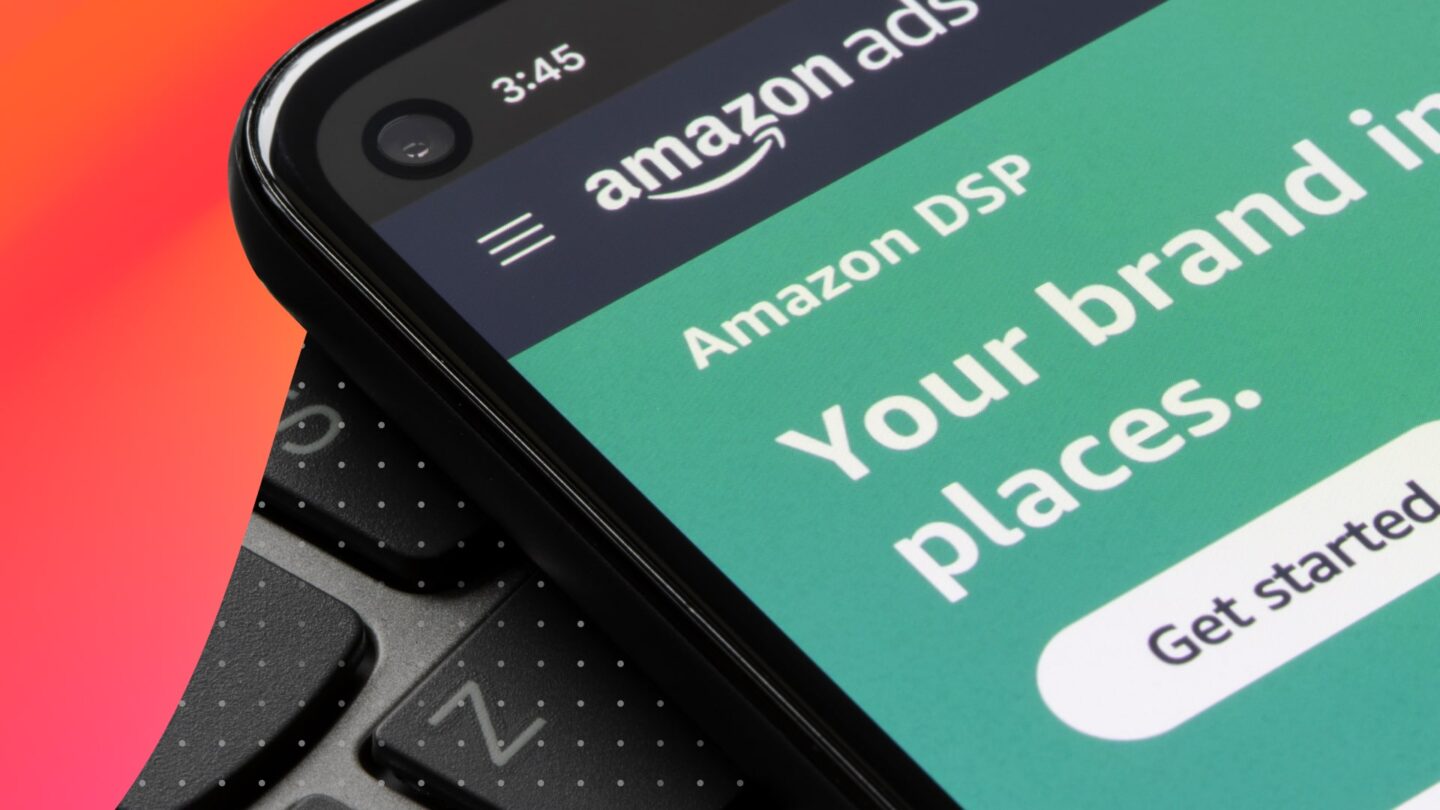
With over nine million marketplace sellers across Amazon, it’s becoming increasingly difficult for brands to stand out—even as today’s consumers shop online more every day. And if you’re not actively engaging and re-engaging your potential customers, your competitors will be.
The good news? Advertising to the audiences available within the Amazon Demand-Side Platform (DSP) can help increase your brand awareness both on and off Amazon, reaching new and existing audiences. Through Amazon’s DSP, you can keep your brand messaging consistent with a full-funnel strategy. And its capabilities are only amplified when leveraging it in conjunction with Amazon Marketing Cloud.
Amazon DSP — also known as the Amazon Demand-Side Platform — enables advertisers to programmatically buy video, audio, and display ad placements, using available data to target consumers on and off of Amazon.
Advertisers are increasing investment in Amazon DSP, which allows brands to use Amazon’s incredible targeting capabilities in showing ads not only on Amazon owned-and-operated web properties, but also those that it does not control.
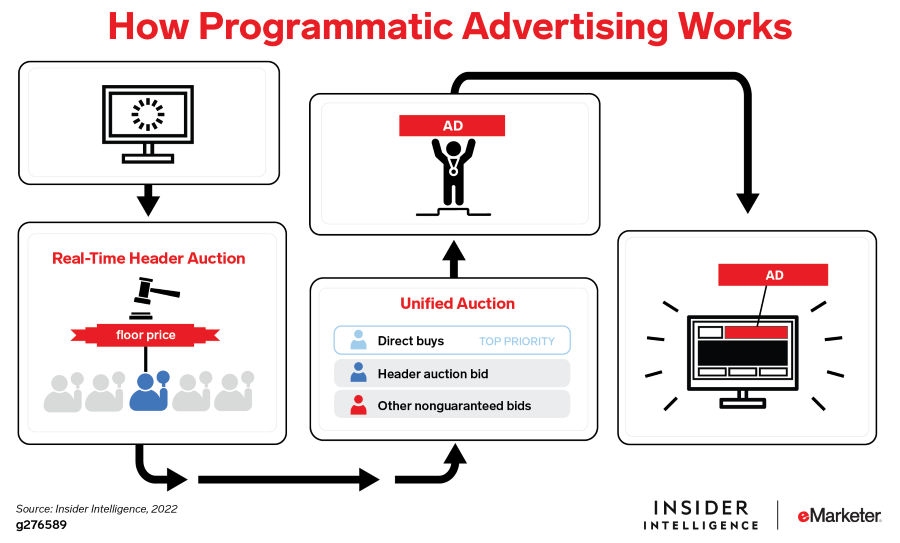
You can use Amazon DSP to reach audiences on:
Looking at recent data from Tinuiti’s Q3 2022 Amazon Ads Benchmark Report, investment in DSP was on the rise QoQ thanks in part to the video capabilities of DSP, and an overall investment increase to boost Prime Day sales.
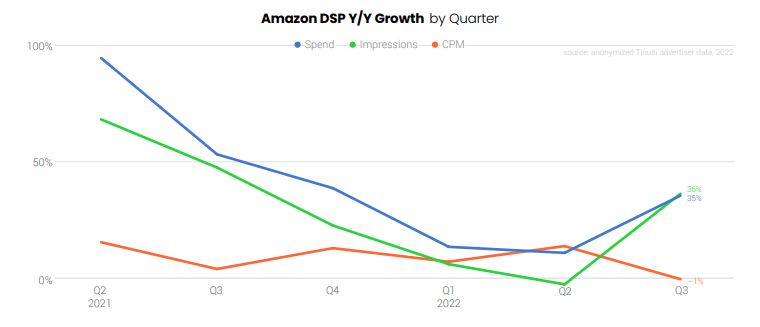
The report found:
As with all things Amazon, they are continually working to improve and expand the options for the DSP. Although Twitch audiences have been available within the AMZ DSP for a while, Twitch display inventory is a more recent addition that just dropped in December 2022.
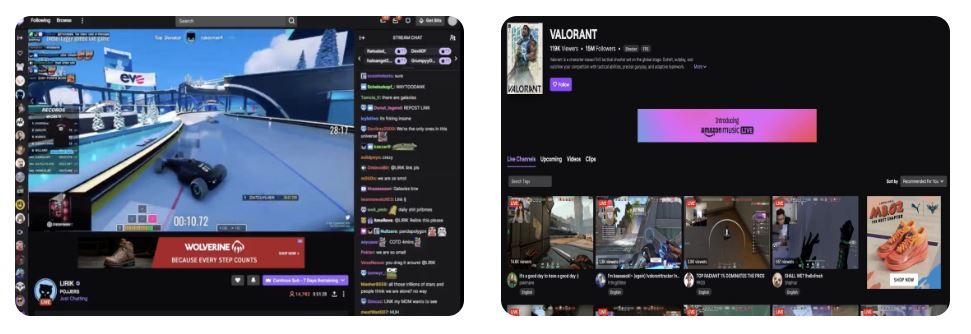
As noted in Amazon’s announcement, “advertisers can incorporate Twitch into their web display campaigns as non-guaranteed open auction inventory,” which includes Twitch’s Stream Display and Standard Display ad inventory.
Twitch content and usage is only continuing to grow, meaning there is a large and expanding audience available to target. Audiences can be built within the AMZ DSP from Twitch streaming content to engage with users based on channels, genres, and games with a 30-day lookback window.
As Stuart Dooley, Sr. Manager, Marketplaces at Tinuiti shared in his top takeaways from Amazon unBoxed 2022:
“Amazon continues to grow the Twitch audience—and the reach that Twitch has—making it an important avenue to consider adding to your marketing mix, helping ensure the right advertisers are being served to the right audience at the right time and location.”
Most brands using Amazon DSP are also running full-funnel Sponsored Ads campaigns, to include Sponsored Products, Sponsored Brands, and Sponsored Display. While DSP and Sponsored Display share some similarities, they function differently, and can help in achieving complementary goals.
Key similarities and differences include:
Amazon DSP is available as a managed or self-service option, with ad costs varying by ad format and placement. As noted by Amazon, the managed DSP option, which is handled by Amazon’s internal team, “typically requires a minimum spend of $50,000 USD.” With this minimum in mind, many advertisers choose the self-service DSP route.
It’s important to note that unlike Sponsored Products, Sponsored Brands, or Sponsored Display ads, leveraging DSP requires that you work with an Amazon Ads Agency Partner like Tinuiti. This makes them less fully self-service than other ad types that brands can opt to run on their own or through an agency, but doesn’t require the hefty minimum spend of having Amazon manage your DSP campaigns.
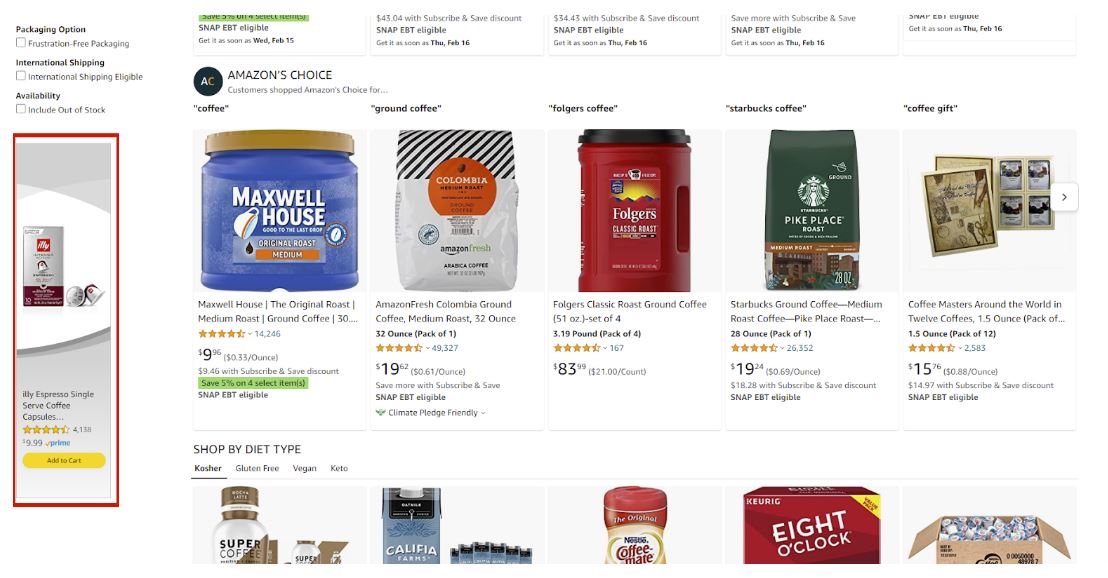
Amazon DSP is available to brands who sell products on Amazon (vendors and third-party sellers), as well as those who don’t sell on the platform. It is currently available in more than a dozen countries, including the US, Canada, and Mexico in North America.
Amazon DSP is best for brands who want to:
It’s becoming increasingly difficult to have any marketing conversation without a primary topic being first-party data. By now, we all understand the importance and value of privacy-compliant 1P data, and are always looking for new ways to both collect and leverage it. And as for which retailers have the largest quality and sheer quantity of first-party data to work with, Amazon is very high on the list.
‘Amazon Shoppers’ is probably as close to ‘everyone’ as it gets in advertising.
DSP enables advertisers to reliably reach their desired audience among Amazon shoppers—both on Amazon, and off—thanks to Amazon’s wealth of shopper data and targeting features. Advertisers can target Amazon shoppers based on key demographics, interests, shopping behaviors, specific geos, and more. Who is included in ‘Amazon’s shoppers?’ Just about everyone reading this.
According to stats shared by Amazon, they have 300+ million active customer accounts, and “Amazon Advertising reaches 96% of all U.S. adults ages 25-54 every month.”
Amazon offers audience insights to help advertisers understand their audience based on:
With this information, you can add demographic targeting into your upper-funnel strategies, such as targeting a specific age group. This can be especially helpful if you have a limited budget and need to limit your audience reach.
There are two different ways to use audiences on DSP:
1. Advertiser Audience (aka using your company’s first-party data)
This is a great choice if you already have a lot of data on your customers and prospects. By using pixels, DMP audience transfers, and/or CRM data, you can reach Amazon customers who have already engaged with your brand.
For example, you can:
2. Amazon Audiences
Amazon’s Audience Solutions let you target audiences based on demographic information—including age, income, or education level—as well as their interests and behaviors.
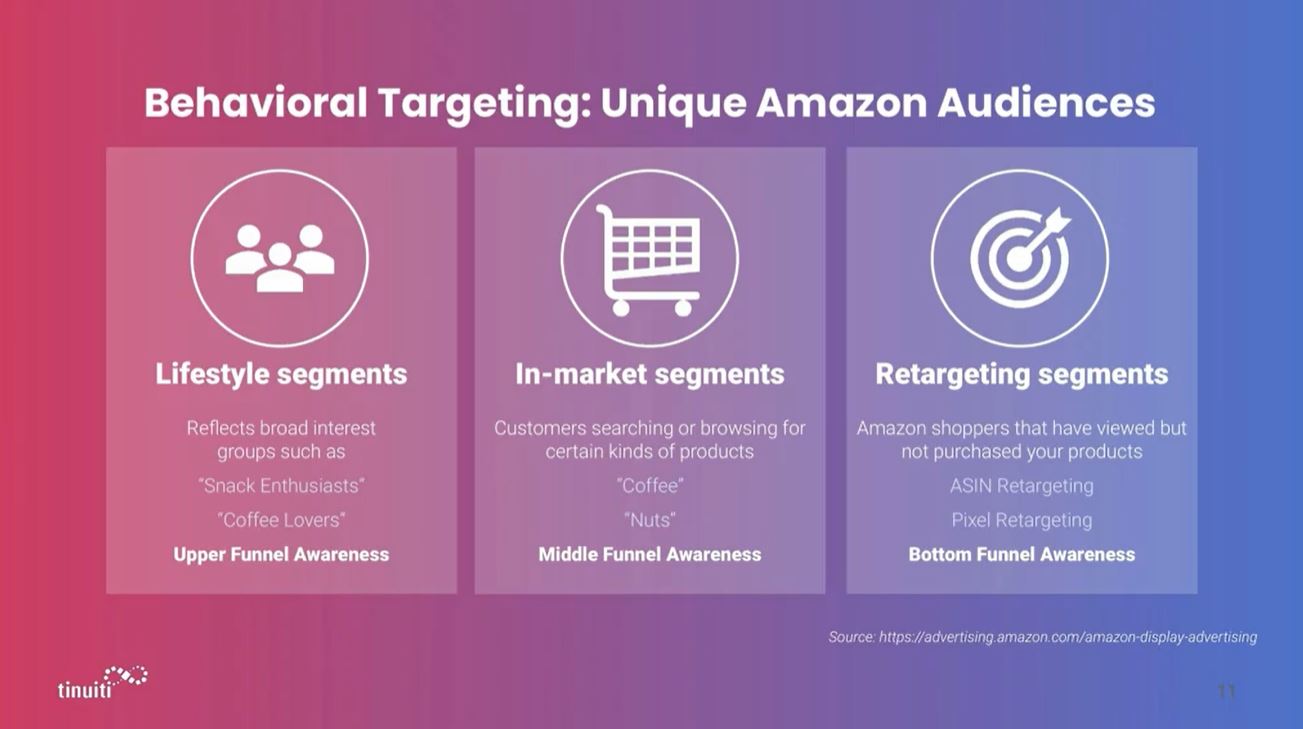
For behavioral targeting campaigns, Amazon Audiences segments include:
Conquesting campaigns can even be leveraged by targeting customers looking at competitor ASINs/products.
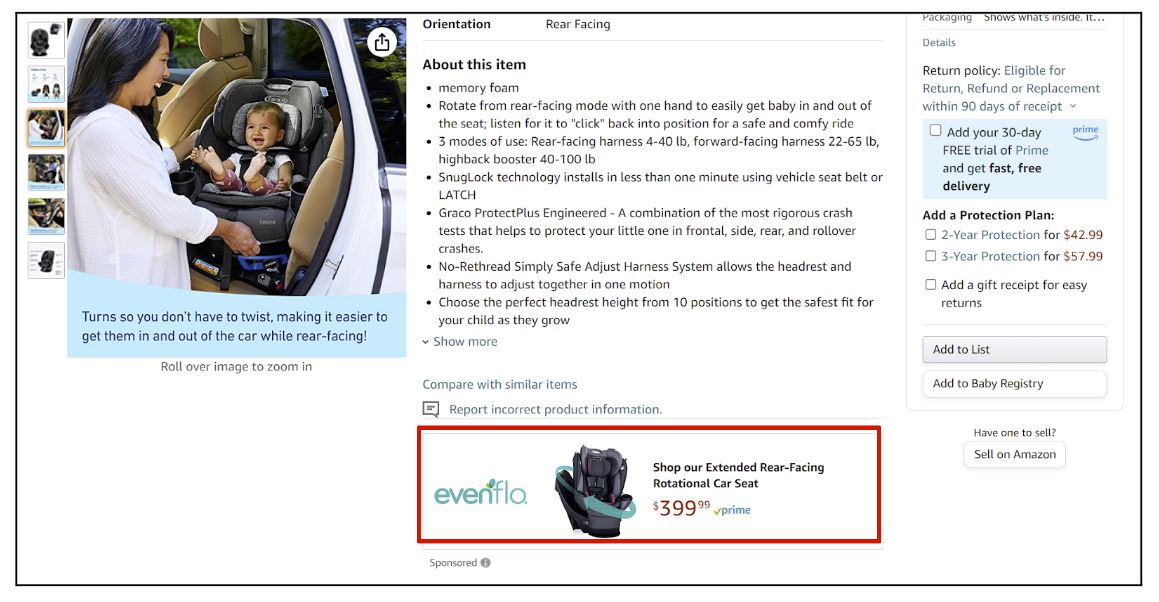
Amazon Audiences is one of the biggest benefits of using Amazon’s DSP. Using audience insights helps you understand how and when your audience shops, which in turn makes it easier for you to build out retargeting campaigns based on your audience’s data and behavior.
Amazon DSP enables brands to target a wider range of potential customers referred to as “in-market” or “lifestyle” shoppers.
In-market Audiences are leveraged to reach customers who are most likely to take action or make a purchase based on their search, browse, or purchase behavior in the past 30 days.
Examples might include shoppers who recently perused or purchased:
Lifestyle audiences reflect broader interest groups. Advertisers can reach lifestyle audiences to plant their brand in the minds of shoppers who have regularly shopped for related products in the past year.
Examples might include targeting:
The ability to build custom audiences in DSP is another major distinguishing factor from Sponsored Display. Advertisers can target an array of unique audiences based on available shopper data. This can include audiences based on how shoppers have interacted with your brand, or their behavior in regard to products related to yours on Amazon.
DSP also gives advertisers the opportunity to reach audiences based on very specific behavior. For example, in October 2021, Amazon DSP launched the ability to Create custom-built audiences using Store interactions. And in November 2021, Amazon Ads launched their first “physical store signal” in the DSP, enabling US advertisers to Create custom-built audiences using Whole Foods Market physical store purchases. Think of how these audiences might benefit your brand, and what ASINs you’d want to include in campaigns for each.
Creating custom audiences gives advertisers a chance to really dive into the data, and strategically experiment with new audiences based on their findings. This is where experience and expertise come into play, helping to spot opportunities and unique angles to approach them.
Brands can use DSP to re-engage shoppers that have high purchase intent for your products in a few ways, retargeting shoppers who:
Through Amazon DSP, you can programmatically reach your audiences across both Amazon’s own sites and apps (like IMDb) and leading publishers’ sites. Here’s how Amazon ads fit throughout the funnel:
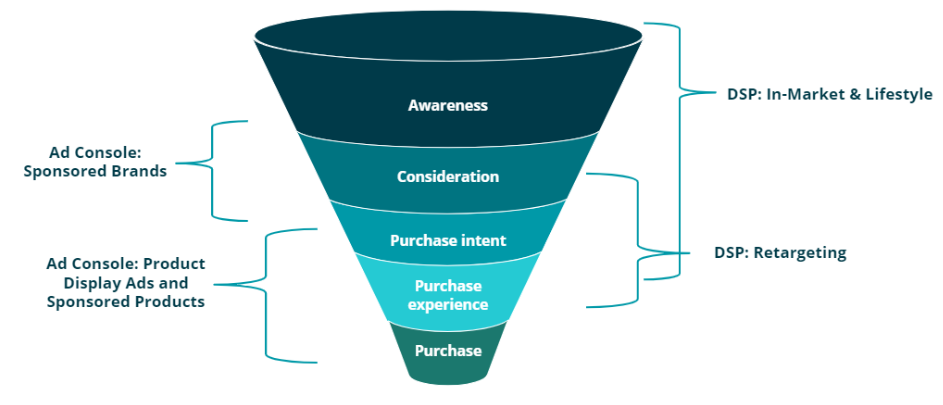
Ad Console campaigns mostly cover the mid- to low portion of the funnel. These campaigns work towards driving purchases, while DSP works throughout the whole advertising funnel from awareness to purchase. Having the capability to retarget customers through DSP keeps your brand top-of-mind for prospects and previous customers.
In this post, we’ll focus specifically on the mid-and upper-funnel advertising strategy: the consideration and awareness buckets. The targeting strategies we’ll cover work for businesses that sell both on and off Amazon. These upper-funnel campaigns will ultimately help you fill your retargeting campaigns and grow the number of people you target at the bottom of the funnel.
“When advertisers see a retargeting ROAS that has plateaued, we often recommend considering a full-funnel Amazon strategy. This allows for increased scale, reaching consumers who are interested or “in-market” but not necessarily dedicated to a specific brand. Those consumers are then led down the funnel to help fuel the audience pool for future retargeting efforts.”
– Natalie Samson, Marketplaces DSP Senior Manager at Tinuiti
Now that you know how to target the right audience, it’s time to create some ads. Here are four main ad types available to your brand through DSP.
Responsive eCommerce Creative first became available to all advertisers on Amazon DSP in January 2021, and has grown to be a very popular ad type. When creating an REC, advertisers can place up to 20 different ASINs into the build, and choose up to 10 different supported ad sizes that will auto-populate based on line item goal type and ad format.
These ads allow for easy ad creation and machine learning optimization. If a product goes out-of-stock, RECs will automatically pause that ASIN in the list and auto-populate based on the other listed ASINs.
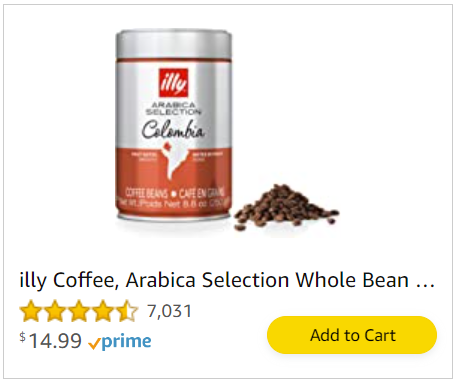
Note: Dynamic eCommerce Ads (DEA) are no longer supported and have been replaced by Responsive eCommerce Creative (REC).

Static ads don’t have any dynamic elements, so they need specific calls-to-action, like “Shop Now.” We recommend using these ads as mid- and upper-funnel tactics to draw shoppers in and help grow brand awareness. These ads lead back to an Amazon storefront, product detail page, or custom landing page.
Video is a great way to tell your brand story and create an emotional connection with your audience. Video ads through DSP can run within video content (in-stream video) or as part of a display ad (out-stream video). You can link your video ads through DSP to a product detail page on Amazon or to your own site. Creating video ads through DSP also means you can leverage Amazon’s audiences to target the right shoppers.
Amazon’s OTT ads also run on the DSP platform. These non-skippable, full-screen ads are a great way to reach millions of people on connected TV sources (like the Amazon Fire TV Stick). You can target specific Amazon audiences, but keep in mind that these ads are not clickable.

Before you dive into the upper-funnel strategies, make sure that your product is retail-ready, ensuring your:
We also recommend running Ad Console campaigns for branded searches at the same time. If your DSP efforts work, and you increase your brand awareness, you will also see an increase in branded searches.
Not every product has a budget for a full-funnel approach and not every product makes sense to run year-round, full-funnel strategy. That said, you need to make sure you have an always-on approach to retargeting, then layer in mid- to upper-funnel efforts as needed.
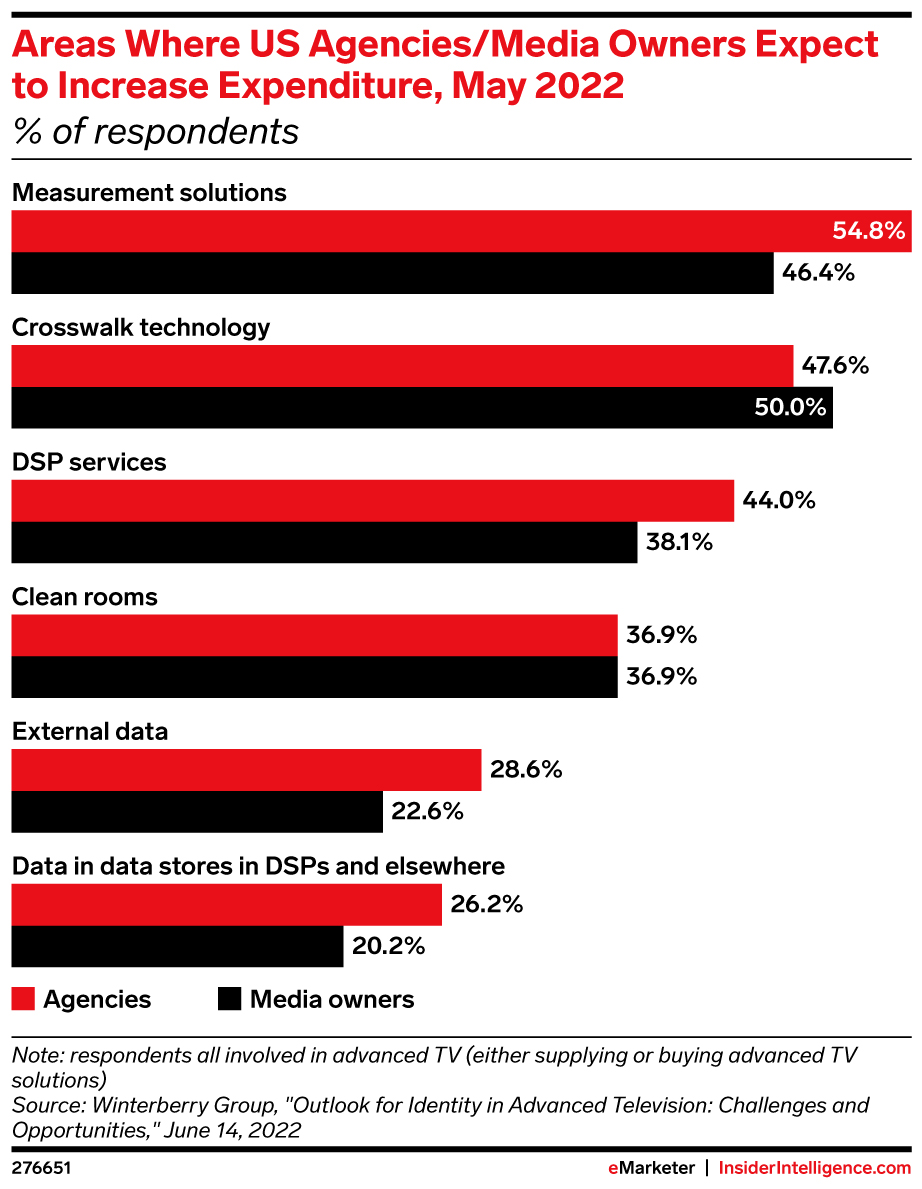
Amazon Marketing Cloud—Amazon’s data clean room solution—provides advertisers with a wealth of data they can leverage in building their strategies and scaling their campaigns. AMC gives you everything you need to see success—once you take the time to learn how to really use it to help in uncovering the insights that would otherwise be unavailable.
As we all know, Amazon offers full-funnel advertising options, but before Amazon Marketing Cloud was launched, it wasn’t easy to understand (and act upon) the ways in which all those options were working together, and influencing each other’s performance. AMC helps advertisers analyze the full picture of their Amazon performance across all marketing avenues.
As a privacy-safe repository for all available data—including your own uploaded data (CRM data, in-store sales, etc.), DSP data, and data from your Sponsored Products, Sponsored Brands, and/or Sponsored Display campaigns—AMC provides that much-needed holistic understanding of what is working, what isn’t, and what the next steps should be.
AMC offers:
As Maddie Barton, Director of Marketplace Programmatic at Tinuiti, shared in a recent interview for Amazon’s blog…
“You are better positioned to tap into the full potential of AMC if you use sponsored ads as well as Amazon DSP. You can use the signals in AMC to bridge those ad types and develop an insight-backed narrative to shed light on connections between the two.”
— Maddie Barton, Director of Marketplace Programmatic at Tinuiti
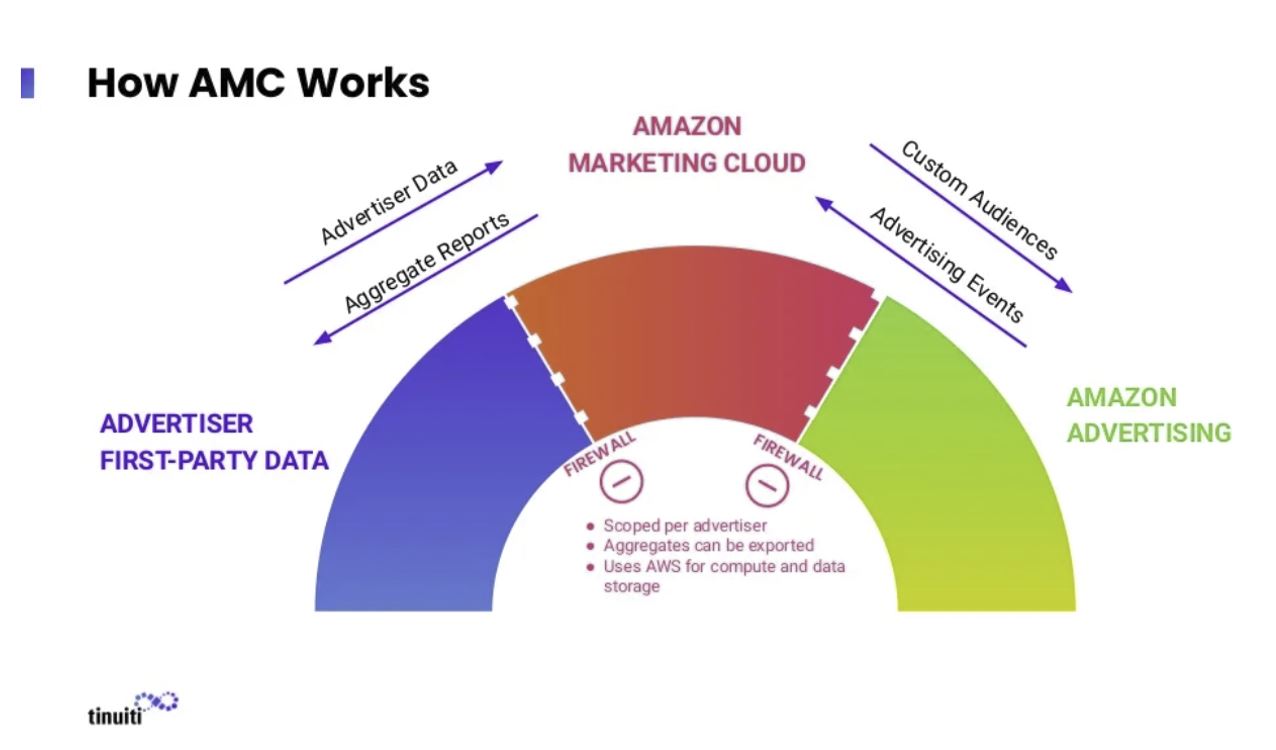
Aly Fields and Mike Cooper also shed a bright light on the topic in a recent webinar—A Performance-Based Approach to Amazon DSP.

Some key takeaways from their information-packed webinar include:
Want more information on AMC? Check out the below:
Amazon Marketing Cloud 101: How to Revolutionize Your Marketplace Capabilities
Demystifying Amazon Marketing Cloud’s Attribution Model
Behind the Numbers podcast episode with Nirish Parsad and Aly Fields
When R+Co first launched on Amazon their products quickly flew off the shelves. They were operationally healthy and had amazing reviews, but things began to slow down a bit over time.
The Tinuiti and R+Co teams had to go back to the drawing board and ask themselves:
The answers to those questions led to investing more heavily in R+Co’s branding to take full advantage of the real estate on Amazon where they could showcase their creativity and brand story. With Amazon Stores being microsites that allow brands to create a customized experience within Amazon, the next steps were clear, and the Tinuiti team began designing and building out R+Co’s Amazon Store.

R+Co already had high brand awareness from selling across other platforms, but wanted to make sure they showed up for relevant searches within Amazon — whether a shopper included their brand name or not.
With that buttoned-up, R+Co worked with Tinuiti to layer in a more full-funnel Amazon DSP strategy. Once fully implemented, R+Co saw the following performance increases:
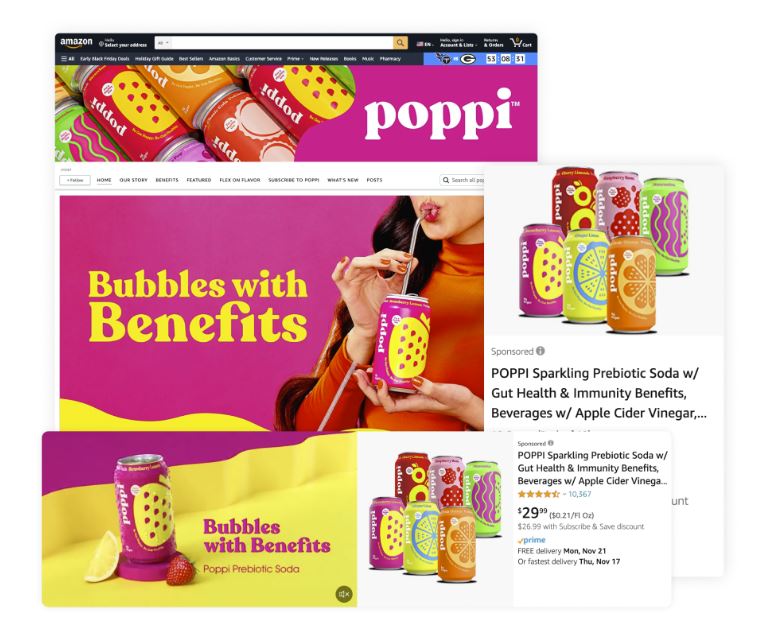
When Poppi started working with Tinuiti, they already had one of the most essential components for success working in their favor: a high-quality, enjoyable product that fills a very real gap in the CPG space. Understanding consumers’ love of the sparkling, sugary sweetness that keeps them sipping traditional soda brands, Poppi set out to create a prebiotic-packed alternative that satisfied palates without the empty calories or chemicals.
Among Poppi’s priorities was better understanding the impact their Amazon media was having across the full marketing landscape—particularly, the in-store impact at Whole Foods stores.
Here’s how we approached their strategy, and answering that question:
“Amazon’s Marketing Cloud (AMC) is providing new signals that help Poppi see a longer string of attribution across a complex multitouch media system. We love seeing a more complete picture of what ultimately drives customer acquisition and Tinuiti has been an incredible partner in not only understanding all AMC capabilities, but also how to put those insights into action.”
— Graham Goeppert, VP of Digital Commerce & Media, Poppi
Poppi’s Amazon media campaign resulted in (January 2022 – July 2022):
Now you’re ready to start using Amazon DSP to fill your marketing funnel and improve your customer acquisition.
As a reminder, here’s your order of operations:
Interested in learning more about Amazon DSP? Contact us today for more information, and be sure to register for our 2-day 2023 Commerce Summit, with info-packed sessions on Wednesday, February 15, 2023 and Wednesday, February 22, 2023.
